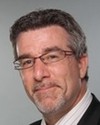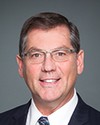One aspect of exchanging information is day-to-day contact. There's a lot of discussion among the operators, the front line, to share information. In terms of, say, the relationship between the RCMP and the service, there are a lot of different, newer protocols to ensure they work well together, that they de-conflict on issues and activities. The RCMP leads are a big step forward with regard to integrated national enforcement teams.
One of the issues that was noted as a priority in the Air India action plan was the improvement of domestic information sharing among federal departments. The concern is that the ability to lawfully share information that is relevant to national security is mitigated through a patchwork of legislation, and so on, which creates a risk aversion to sharing. One of the issues the government is committed to look at in that action plan is how to improve that, to improve the culture of risk aversion to sharing, to manage decisions and talk to lawyers, to get to a bit more of a presumption of sharing, where everyone is comfortable with a lawful basis to share. So that's certainly something we want to do.
There's a commitment in the Beyond the Border action plan to work more with our U.S. counterparts on sharing information. The first step there is understanding each other's privacy regimes, the Constitution and the charter, in sharing and being clear on what is a lawful basis for the security agencies to share.





